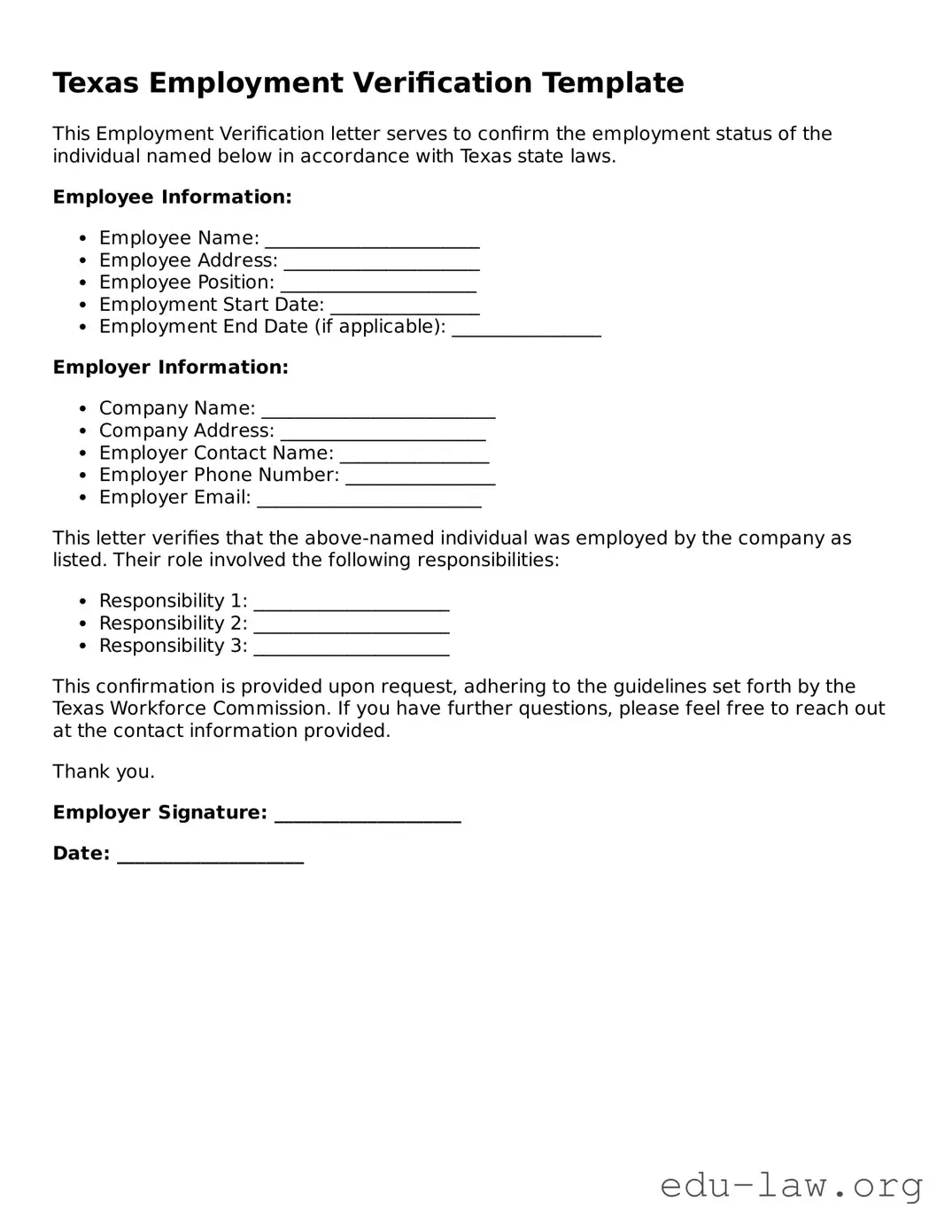The Texas Employment Verification form is similar to the I-9 Form, which is used nationwide to verify the employment eligibility of employees in the United States. While the Texas Employment Verification form focuses on confirming current employment status and income details for verification purposes, the I-9 Form primarily serves to affirm that a person is authorized to work in the country. Both forms require personal information and may necessitate the inclusion of identification documents to support the verification process, ensuring compliance with employment and immigration laws.
Another similar document is the W-2 form, which reports an employee’s annual wages and the taxes withheld from their paycheck. While the Texas Employment Verification form may be used by an employer to confirm employment details, the W-2 provides a comprehensive overview of compensation for tax purposes. Both documents serve to establish the economic status of an employee, helping individuals in different situations such as applying for loans or benefits where proof of employment or income is needed.
The Pay Stub is also comparable to the Texas Employment Verification form, as it details an employee’s earnings over a particular pay period. While the Texas form offers verification of employment status and possibly income, a Pay Stub includes more specific information on gross earnings, deductions, and net pay. Both documents are essential for individuals needing to demonstrate their financial standing for loans or rental applications, making them integral to employment verification processes.
The Employee Reference Letter can provide insight similar to the Texas Employment Verification form, though its focus is on character and performance rather than mere employment status. Employers typically issue this letter to attest to a worker's contributions to the company. Like the verification form, an Employee Reference Letter can enhance the credibility of an individual when seeking new job opportunities or securing loans, as it gives potential employers or financial institutions an additional perspective on a candidate's qualifications.
A State Unemployment Insurance Record bears resemblance to the Texas Employment Verification form by representing a worker’s employment history. This document is often required during the unemployment claim process. Similar to the Texas verification form, this record serves to confirm an individual's previous employment and earnings, which can be crucial for those navigating job transitions or seeking assistance during periods of unemployment.
Lastly, the Social Security Administration (SSA) Work History Report functions in a manner akin to the Texas Employment Verification form, as it summarizes an employee’s work history as reported to the SSA. This report can help verify employment status and wages over an individual's career. Both forms can be useful for various applications, including securing mortgages or determining benefits eligibility, thereby assisting individuals in demonstrating their work history and economic stability.
